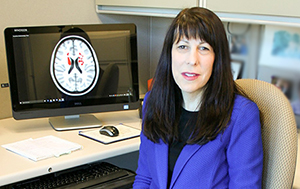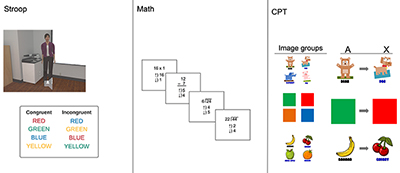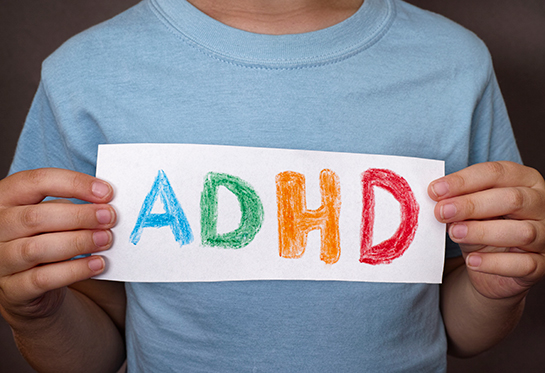ADHD: An expert shares common symptoms and the latest research
Attention-deficit/hyperactivity disorder (ADHD) is one of the most common neurodevelopmental conditions of childhood. It occurs in 5-9% of the population. Though people are usually diagnosed when they’re young, ADHD often continues throughout a person’s life. Symptoms can include inattention, impulsivity, and hyperactivity, and may change as someone ages. Treatments include stimulant medications and behavioral therapy.
According to the Centers for Disease Control and Prevention, as of 2016, more than 6.1 million children have been diagnosed with ADHD at some point in their lives. Boys are about twice as likely as girls to be diagnosed.
The UC Davis MIND Institute’s Julie Schweitzer, a professor in the Department of Psychiatry and Behavioral Sciences and an ADHD expert, shares common symptoms and the latest research being done at the MIND Institute:
What are the most common symptoms of ADHD?

It’s important to consider both the person’s age and the setting. Symptoms must be present across settings and cause severe disruption: both at school and home for children, and both at work and home for adults. Frequently, the challenges of ADHD also affect social relationships.
Symptoms may include:
Inattention
- Difficulty paying attention
- Easily distracted
- Frequent daydreaming
- Forgetting or losing things
- Difficulty finishing tasks or projects; may do their homework but forget to turn it in
- Making careless mistakes
Hyperactivity
- Difficulty staying seated
- Fidgeting or squirming, tapping their hands
- Talking too much
- Always in motion, as if driven by a motor
Impulsivity
- Difficulty taking turns
- Often interrupting others or blurting out answers
- Difficulty waiting for things
Symptoms of ADHD may be primarily inattentive, primarily hyperactive or impulsive, or can be a combination of both.
There are a lot of misconceptions about ADHD and its symptoms. At the MIND Institute, we are focused on evidence-based research and care. I was recently a co-author on the World Federation of ADHD Consensus Statement, which reviewed key studies around the world. More than 80 authors from 27 countries put together over 200 key findings about ADHD that are supported by research.
How are the symptoms of ADHD different in adults versus children?
As the brain develops, symptoms also evolve. For some people, they largely disappear. For others, they continue into adulthood. Common challenges for adults include procrastination, poor time management, feeling restless, low stress tolerance and difficulty completing tasks, like paying their bills. Adults may also seek out jobs that require high levels of activity or multitasking, like sales. People with ADHD may also have difficulty regulating their emotions and may be irritable or have a quick temper.
Why do ADHD symptoms fade in some people and not in others?
That’s something we are studying at the MIND Institute. Our MINT (Mapping Impulsivity’s Neurodevelopmental Trajectory) study has been running for eight years and includes more than 200 participants ages 12-30. The prefrontal cortex and the cerebellum don’t finish maturing until you’re about 26, so as these parts of the brain mature, there may be changes in brain development and connectivity that may lessen ADHD symptoms.

We are acquiring brain scans over time, tracking measures like students’ grades in school, and asking them, their parents and their teachers to rate their behaviors. For example, do they wear a bike helmet, eat junk food, or use illegal substances? It’s about tracking self-control and the way people make decisions. We also ask them to complete reward response and working memory tasks. These tap into processes influencing decision-making. Then we may ask them to make decisions like do they want a dollar now or $10 in a week.
We are following these adolescents and young adults for many years to see if they outgrow some of their symptoms, and if they do, what happens in the brain.
What are your findings so far?
The dopamine connection:
Our research has found that structural connectivity between brain regions related to dopamine, a neurotransmitter involved in reward and affected by stimulant medication, differs between people with ADHD and typically developing people. We found stronger connections between the reward and emotion regions and weaker ones between the reward and attention regions which may lead to greater impulsivity.
Working memory:
We are also studying working memory, which allows you to retain information on a short-term basis to complete a task. Some people – but not all - with ADHD have working memory deficits. In trying to understand why, for this study we took brain scans of participants (both with ADHD and without) while asking them to recall three or four objects in forward or backward order. We compared the impact of the load, or amount of information, and the complexity of the task. We found that in tasks with larger amounts of information, or those that were more difficult, certain parts of the brain were less activated in individuals with ADHD. This may have important implications for interventions, such as working memory training.
ADHD and irritability:
We have also had significant findings related to ADHD and irritability. In one recent study we examined the role that irritability may play in the course of ADHD symptoms over adolescence. We examined sex and/or gender differences in ADHD and looked at whether that moderated the link between irritability and future ADHD symptoms. We found that higher levels of baseline irritability predicted higher hyperactive/impulsive symptoms 18 months later. This was true only for females.
Another study looking at irritability in ADHD and functional brain connectivity demonstrated stronger connectivity between the reward- and threat-processing brain regions and weaker connectivity between the attention- and emotion-processing regions. Now that the field is learning that irritability is more frequent in ADHD and associated with the unexpected omission of an expected reward, clinicians should consider treatments that help people with ADHD tolerate disappointment when they do not achieve a goal.

What are the treatments to help manage ADHD symptoms?
The best approach often involves both medication – often a stimulant medication – and behavioral therapy or modification. That could mean academic support at school, coaching to improve goal setting and setting up methods to attain goals and help with time management and organization. Physical exercise may also be helpful, as well as other approaches that target regulating one’s emotions. Based on our research and others, clinicians should also assess if irritability is affecting them and needs to be addressed.
The MIND Institute offers parent education workshops, which help families to improve parent-child interactions and create a more structured and predictable home environment, as well as better home-school coordination. Topics include the use of positive attention, homework strategies and the educational rights and learning styles of children with ADHD.
What research are you doing into possible behavioral therapies?

Our VRAM (Virtual Reality Attention Management) study is investigating a non-pharmaceutical method of addressing ADHD and distractibility. We’re using a virtual reality (VR) classroom to determine whether “exposure therapy” with habituation to common distractors can help kids overcome distractibility. Participants wear a VR headset and are tested on how they perform attention-demanding tasks in a virtual classroom environment that includes a lot of distractions, such as students talking or teachers walking by. The idea is to train the brain to stay focused in spite of distractors. The sessions last for 25 minutes. Participants are 8-12 years old and are asked to do one session daily. The goal is to transfer the lessons and training from the virtual classroom to the real classroom.
We’ve recently redesigned the virtual classroom and will be expanding this study in the coming months to hopefully start measuring what the impact is outside of the VR environment. We have some very exciting preliminary findings about the use of eye-tracking to track attention.
What other ADHD studies do you have planned?
In the next few weeks, we hope to start a project involving a specially designed “smart” fidget ball. This study is a collaboration between the MIND Institute and researchers at UC Santa Cruz. Adult participants will perform attention and memory tasks and be shown film clips to evoke an emotional response. The team will study natural movements, like fidgeting, in addition to giving some participants the “smart” fidget ball to squeeze, click or tap. We’ll be using machine learning to analyze results and to try to predict what specific type of fidget ball behaviors are effective and recommend them as possible therapies.
Are there positive aspects to an ADHD diagnosis?
Yes! People with ADHD tend to be energetic, creative, willing to take risks, spontaneous and adaptable. They are often able to hyperfocus on a task that they’re very interested in or engaged with.
What should a parent do if they suspect their child has ADHD?

Start with a pediatrician or primary care provider, who can refer the child for an assessment if needed. Clinical psychologists can perform in-depth evaluations and provide behavioral therapies. Psychiatrists can provide specialized treatment for ADHD, particularly if it occurs with other psychiatric challenges. There are many options for treatment of symptoms that can dramatically improve quality of life, so I encourage parents who have questions to seek out medical advice.
In addition to the MIND Institute’s ADHD website, Understood.org and Children and Adults with Attention-Deficit/Hyperactivity (CHADD) are good resources.
The UC Davis MIND Institute in Sacramento, Calif. was founded in 1998 as a unique interdisciplinary research center where families, community leaders, researchers, clinicians and volunteers work together toward a common goal: researching causes, treatments and potential prevention of challenges associated with neurodevelopmental disabilities. The institute has major research efforts in autism, fragile X syndrome, chromosome 22q11.2 deletion syndrome, attention-deficit/hyperactivity disorder (ADHD) and Down syndrome. More information about the institute and its Distinguished Lecturer Series, including previous presentations in this series, is available on the Web at mindinstitute.ucdavis.edu.




